
Do you have a question about the Panasonic VIERA TC-P50G20 and is the answer not in the manual?
| Screen Size | 50 inches |
|---|---|
| Display Type | Plasma |
| Resolution | 1920 x 1080 |
| Refresh Rate | 600Hz |
| HDMI Ports | 3 |
| Component Video Inputs | 2 |
| USB Ports | 1 |
| Ethernet Port | Yes |
| Speakers | 2 x 10W |
| Inputs | HDMI, Component, Composite, USB, Ethernet |
| Contrast Ratio | 5, 000, 000:1 Native Contrast Ratio |
Key instructions for safe operation and handling of the TV.
Critical warnings regarding electrical shock, fire hazards, and physical injury.
Guidelines for safe use of the power cord, including connections and damage prevention.
Precautions for moving the TV and ensuring proper ventilation to prevent overheating.
General advice on TV installation and use, focusing on child safety.
Instructions and warnings for securely mounting the TV to a wall.
Information about preventing screen burn-in and managing image retention.
List of items included with the TV, such as remote and batteries.
Details and warnings for the optional wall-hanging bracket.
Step-by-step guide on how to install batteries in the remote control.
Instructions for assembling the TV's stand using provided screws.
Steps for attaching the assembled pedestal to the TV securely.
Guidance on positioning the TV on the pedestal and adjusting its angle.
Instructions for connecting the AC power cord and AV cables.
How to connect an antenna or cable TV for receiving broadcast signals.
Steps for connecting devices like Blu-ray players or game consoles via HDMI.
How to connect devices using HDMI for high-definition video and audio.
Connecting devices using Component video and audio cables.
Connecting devices using Composite video and audio cables.
Identifies buttons and ports on the TV's front and rear panels.
Explains the purpose and operation of each button on the remote control.
Steps to power on the TV for the first time to begin setup.
Selecting language and viewing mode (Home use or Store Demonstration).
Guide to automatically scan and set up TV channels and cable inputs.
How to label external equipment inputs for easier selection.
Steps to set up network connections, including automatic or manual modes.
How to set the TV's clock manually or automatically via network.
Final steps to confirm setup and begin using the TV.
How to power the TV on and off using the remote or TV unit.
Methods for changing channels, including direct entry.
How to select different audio tracks or modes for programs.
How to turn closed captions on or off for accessibility.
How to show or hide the channel information banner on screen.
Adjusting the picture's aspect ratio for optimal display.
How to set up and call up a list of favorite channels.
Methods for entering text and using a USB keyboard for input.
Steps to register channels in the favorite list for quick access.
How to remove channels from the favorite list.
How to display the VIERA TOOLS menu for quick access to features.
Guide to selecting and configuring various tools like THX, VIERA CAST, etc.
Overview of supported content types (photos, videos, music) for the media player.
Instructions for inserting SD cards and USB flash drives into the TV.
Steps for inserting media and configuring image viewer settings.
How to select and view photos, videos, or music files.
Different ways to view photos and sort them by date, folder, etc.
How to change audio status for videos and manage music playback.
Adjusting picture, slideshow, and transition effects for photos.
Configuring playback options for movies and music files.
How to access and navigate the VIERA CAST service.
Accessing menu options for picture, audio, and VIERA Link within VIERA CAST.
Information on required internet speeds and connection types for VIERA CAST.
How to connect the TV to the internet via Ethernet or Wi-Fi.
How to display and use the input select menu to choose connected devices.
Using the TV remote to control connected external devices.
Steps to enable VIERA Link and HDAVI Control for component integration.
Configuring specific VIERA Link functions like Power on/off link and energy saving.
How to select the PC input source on the TV.
Adjusting picture settings like resolution, clock phase, and position for PC display.
How to access the TV's main menu structure and options.
Steps for navigating through menu categories and selecting specific functions.
How to adjust various picture and sound settings within the menus.
Detailed options for adjusting picture quality, color, and aspect ratio.
Options for configuring audio output, surround sound, and volume levels.
How to lock channels or programs based on ratings or content.
Options for displaying subtitles and configuring caption styles.
How to set the channel surf mode to All, Favorite, Digital, or Analog.
How to change the menu language and adjust the TV clock.
Configuring antenna/cable reception and labeling input terminals.
Settings for preventing image retention and managing VIERA Link features.
Options for managing power consumption and energy saving features.
Accessing advanced settings like Auto power on, Image viewer auto play, and First time setup.
Explains how HDAVI Control enables simultaneous control of connected Panasonic components.
Details on the type of HDMI cable needed for VIERA Link functionality.
Diagrams and instructions for connecting DVD recorders and AV amplifiers.
Steps to enable VIERA Link after connecting external equipment.
Automatically switches TV input when compatible equipment is turned on.
Settings for linking power states and managing energy saving modes.
Automatically saves energy for inactive connected devices.
Choosing between TV speakers or external home theater speakers.
How to initiate theater playback with a single button press.
Information that can be transmitted from the TV to connected devices.
How to display and navigate the VIERA Link menu options.
Settings for controlling speakers and managing devices via VIERA Link.
Returning the TV input selection to the TV itself.
Selecting Home theater or TV speakers for audio output.
Functions controllable via the TV remote when operating connected equipment.
How to access the network settings menu.
Navigating to the network settings section within the setup menu.
Options for connection test, network connection type, and IP settings.
Steps to test the network connection and troubleshoot errors.
Guide to connecting to a wireless network using WPS or manual settings.
How to view the current network connection status and settings.
Configuring IP address and DNS settings for network connectivity.
Settings related to VIERA CAST and updating TV software.
Setting the IP address acquisition mode to Automatic or Manual.
Configuring DNS server addresses and proxy settings if required.
How to access the lock menu to manage content restrictions.
Setting or entering the password for lock features.
Choosing lock modes like Off, All, or Custom for channels and programs.
Specifying which channels, games, or VIERA CAST options to lock.
How to select specific channels to block from viewing.
Using V-chip technology to lock programs based on age-based ratings.
Securing VIERA CAST access with a password.
Accessing the main setup menu for channel management.
Setting up antenna or cable connections for channel scanning.
Choosing between automatic or manual channel programming.
Choosing antenna source and scanning method for channels.
Modifying channel captions, favorites, and adding/skipping channels.
Verifying signal quality for digital channels.
Accessing the menu to control subtitle display.
Configuring caption display for analog and digital broadcasts.
Customizing digital caption appearance like size, font, and color.
Accessing the menu to create custom labels for inputs.
Assigning names to connected devices for easier input selection.
Accessing the timer settings menu.
Choosing between Sleep timer or On/Off timers (Timer 1-5).
Configuring the specific time, day, and input for timers.
Diagrams for connecting older video devices like camcorders and VCRs.
Recommended connections for DVD players, Blu-ray players, and set-top boxes.
Diagrams for connecting PCs and audio amplifiers to the TV.
Explanation of the MPAA rating system for movies.
Explanation of the US TV rating system, including content descriptors.
Overview of Canadian English and French rating systems.
How closed captions work and their display requirements.
Explanation of different aspect ratio modes like FULL, JUST, H-FILL, and ZOOM.
How to adjust vertical position and size when using ZOOM aspect ratio.
Supported file formats for photos, videos, and music on SD cards/USB.
Important precautions for handling SD cards to prevent damage or malfunction.
Guidelines for connecting USB flash drives, keyboards, and adapters.
Information on HDMI interface, cable types, and supported signals.
Explanation of different picture modes like Vivid, Standard, THX, and Game.
Advanced picture adjustments including white balance, gamma, and panel brightness.
How to use digital audio outputs for surround sound systems.
Details on connecting a PC to the TV via VGA and supported resolutions.
Instructions for gently cleaning the TV screen surface.
How to clean the TV's exterior cabinet and pedestal.
Solutions for common problems like white spots, noise, or distorted images.
Steps to resolve issues when the remote control is not working.
Solutions for screen issues like moving logos, bright/dark spots, or no image.
Troubleshooting for no sound, unusual sounds, or black screen with sound.
Addressing issues like the TV set becoming hot or unusual sounds from components.
Technical details on power consumption, screen size, and audio output.
Information on supported input/output terminals and key features.
Physical dimensions and weight of the TV, with and without the pedestal.
Explains the duration and terms of the limited warranty for parts and labor.
Lists conditions and damages not covered by the warranty.
Contact information for obtaining product help and locating service centers.
Information on purchasing parts, accessories, and instruction books.
Warranty coverage and service details for Panasonic products in Canada.
Exclusions and limitations applicable to the Canadian warranty.
Space to record product model and serial number for warranty and identification.
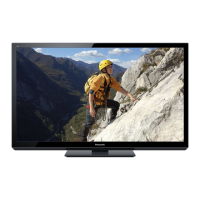
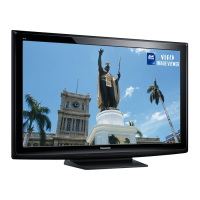
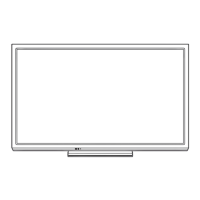

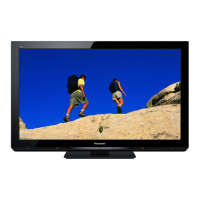
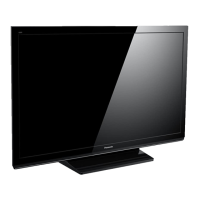
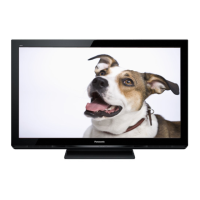
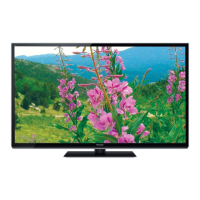

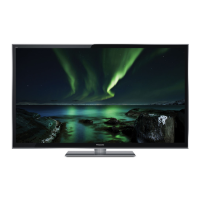
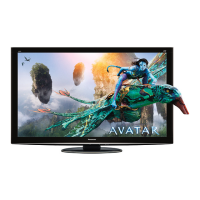
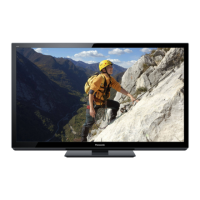
